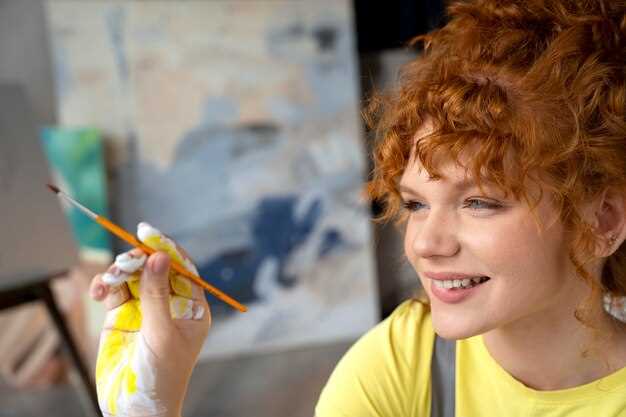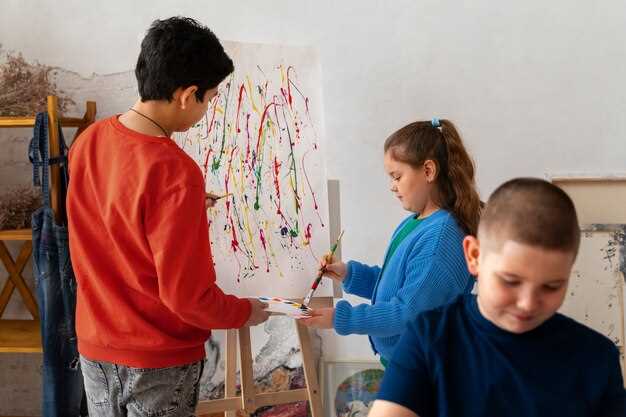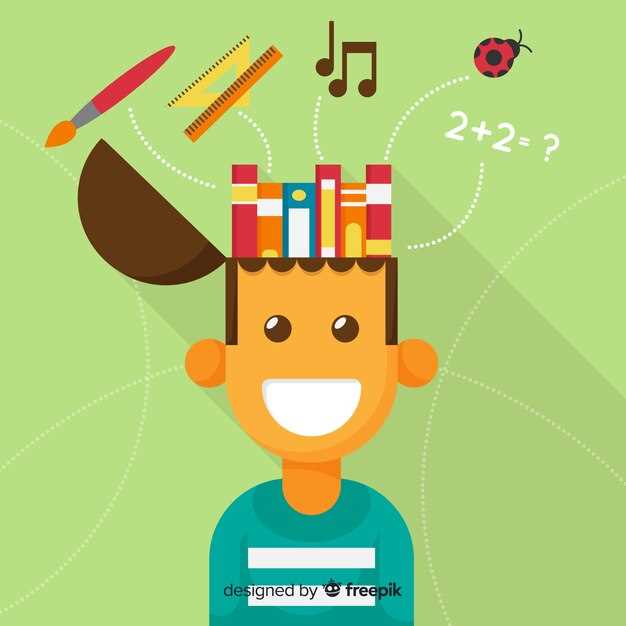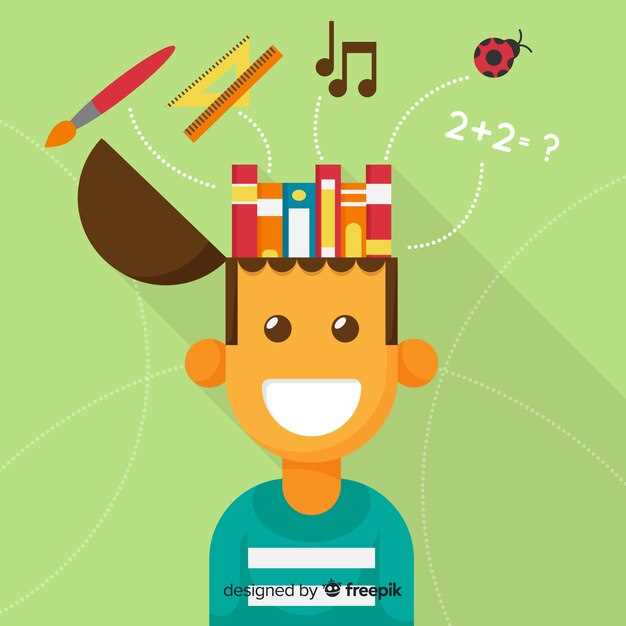In today’s fast-paced world, innovative approaches to personal and collective growth are crucial.
Exploration, imagination, and expression hold tremendous value, guiding individuals in their journeys.
These elements shape not only personal identity but also societal progress.
A dynamic learning environment cultivates these skills, leading to holistic development.
When students engage with diverse forms of expression, they unlock their potential in unforeseen ways.
This immersive experience fosters an atmosphere where ideas flourish, encouraging problem-solving abilities and independent thought processes.
Through active engagement with various disciplines, individuals learn to approach challenges from multiple perspectives, softening the boundaries between rigid thought patterns.
The Importance of Arts Education in Schools

Engaging in various forms of creative expression significantly enriches students’ experiences. These activities provide pathways for personal growth, self-exploration, and emotional development. Without such opportunities, young minds may miss essential avenues for unique expression. Developing skills in this realm fosters not only innovative thought but also a deep understanding of diverse perspectives.
Initiatives focused on performance, design, or visual composition cultivate a sense of achievement. Exposure to these disciplines broadens horizons and allows for profound discoveries. Students learn about the power of imagination, which can inspire solutions to complex challenges. Moreover, these experiences promote collaboration among peers. Sharing ideas enhances social skills and builds confidence.
| Benefits | Details |
|---|---|
| Self-Expression | Encourages individuals to articulate thoughts and emotions creatively. |
| Collaboration | Fosters teamwork skills through shared projects and performances. |
| Problem-Solving | Engages learners in critical analysis and innovative solutions. |
| Cultural Awareness | Exposes participants to various cultures and histories through creative works. |
| Emotional Intelligence | Helps individuals understand and manage their emotions effectively. |
Incorporating these endeavors into daily routines nurtures a holistic approach to learning that is paramount for developing well-rounded individuals. Creativity comes alive in spaces where artistic pursuits thrive, becoming a powerful catalyst for intellectual awakening. Ultimately, providing youngsters with varied opportunities in creative disciplines shapes not only their futures but also the collective future of society.
Fostering Creativity Through Artistic Programs

Artistic initiatives play a significant role in individual development. They nurture individuals’ imaginations. Such activities spark new ideas and foster innovation. Participants embark on journeys of self-discovery. Embracing various forms of expression allows for unique perspectives to emerge.
Engaging in creative tasks has numerous benefits. Programs can incorporate different disciplines like painting, music, or theater. Each artistic outlet serves as a medium for exploration. Students learn to think outside the box. They discover new methods to express thoughts and emotions.
- Hands-on projects promote collaboration among participants.
- Exposure to diverse viewpoints enhances interpersonal skills.
- Problem-solving abilities improve through artistic challenges.
- Critical judgment develops within evaluative discussions.
- Self-discipline is cultivated through sustained practice.
These experiences create a stimulating environment where individuals thrive and grow, allowing them to connect deeply with their surroundings while developing vital life skills necessary for success in various fields.
Moreover, integrating creative practices into daily routines yields profound outcomes. The interplay of structure and freedom in these activities encourages novel thoughts. Students gain confidence as they manifest their ideas into tangible forms. This sense of accomplishment fuels further exploration and experimentation.
Ultimately, artistic programs lay a strong foundation for lifelong engagement with creative endeavors. They inspire a passion for learning that transcends traditional boundaries. The impact extends beyond mere talent; it cultivates a mindset geared towards innovation and resilience.
Role of Arts in Student Development
Engagement in creative disciplines significantly influences young people’s overall growth. It fosters new perspectives, diverse skills, and personal expression. Participation can leave a lasting impact on social abilities. Students gain confidence while exploring their imaginations. Furthermore, various forms of expression contribute to holistic development.
Involvement in creative pursuits stimulates both innovative thought and problem-solving capabilities. When learners immerse themselves in these activities, they often discover unique solutions to complex challenges. Working on a project demands collaboration. This collaboration encourages peer-to-peer interaction, leading to mutual respect and understanding. A vibrant environment is established, one that promotes shared ideas.
Moreover, engaging with various mediums builds emotional intelligence. Individuals learn to articulate feelings, enhancing their communicative prowess. The experience of crafting a piece encourages reflection on personal experiences. This reflection is crucial for understanding one’s self and others. It influences everyday interactions and decision-making processes.
By allowing exploration, learning environments cultivate curiosity and a willingness to take risks. Students who feel safe to experiment often embrace challenges in other academic areas. Such individuals tend to develop resilience as they navigate both successes and setbacks. This resilience translates into life skills essential for future endeavors.
Ultimately, creative involvement plays a vital role in shaping well-rounded individuals. The blend of emotional growth, enhanced communication, and innovative thinking prepares students for diverse paths. As they encounter a world full of complexities, those equipped with artistic experiences often excel in their pursuits.
Enhancing Problem-Solving Skills
Engaging in creative practices cultivates a mindset adept at tackling challenges. When individuals express themselves through various mediums, they encounter obstacles that require innovative solutions. This process fosters resilience and adaptability. As they brainstorm ideas, they learn to evaluate options critically. Each artistic endeavor becomes a puzzle waiting to be solved.
Problem-solving is multifaceted. It involves understanding the issue, considering different perspectives, and applying knowledge in unique ways. Participants in creative activities often face unexpected outcomes. This unpredictability teaches flexibility. They discover new methodologies through experimentation.
- Developing innovative thinking styles.
- Encouraging exploratory methods and approaches.
- Fostering collaboration among peers for shared solutions.
- Nurturing persistence in overcoming obstacles.
Through these experiences, students learn that setbacks are not failures; rather, they serve as valuable lessons paving the way for newfound insights. Such practices ultimately equip them with tools necessary for both academic subjects and real-world situations.
In addition to practical skills, the psychological impact is profound. Engaging regularly in creative activities promotes confidence. As individuals see their ideas come to life, they become more willing to take risks. These lessons translate directly into other areas of study, where problem-solving is equally critical.
- Identify the problem clearly.
- Generate a range of possible solutions.
- Evaluate and choose the best option.
- Implement the chosen solution.
- Reflect on the outcome and learn from it.
Thus, through innovative expression, learners refine vital problem-solving techniques. Experiences gained from artistic exploration lead not just to success in personal projects, but foster a critical approach required in numerous life scenarios.
Connecting Art and Emotional Intelligence
Expressive forms serve as powerful tools for self-reflection and understanding emotions. Through engagement with various creative practices, individuals develop a deeper awareness of their feelings. This journey often leads to more effective communication. Open channels for emotional exploration foster interpersonal connections.
Involvement in creative endeavors encourages individuals to articulate their thoughts. Activities like painting, music, or theater provide avenues for emotional expression that might otherwise remain dormant. This exploration is crucial, as it allows one to navigate complex emotional landscapes.
Furthermore, engagement with creative practices nurtures empathy, a vital component of emotional awareness. As individuals immerse themselves in different perspectives through artistic experiences, they cultivate a broader understanding of others’ feelings. This heightened emotional sensitivity leads to enhanced relationship-building skills.
Understanding emotions through creative outlets not only empowers personal growth but also enriches social interactions and community bonds. Such experiences, when shared, promote a sense of belonging and cooperation. Ultimately, merging artistic involvement with emotional skill development paves the way for healthier, more expressive societies.
Cross-Disciplinary Benefits of Creative Learning
Creative approaches to learning transcend traditional boundaries. They foster an environment where diverse skills intersect, leading to unexpected synergies. Students engaged in imaginative practices develop unique ways of thinking. This integration not only enriches knowledge but also cultivates a deeper understanding of various subjects.
Collaboration stands out as a vital aspect. When individuals from different disciplines come together, they share insights and techniques. Such interactions spark innovation and push participants beyond their limits. For example, a project combining science and visual design can yield exceptional outcomes, bridging the gap between theory and application.
Moreover, problem-solving capabilities are significantly enhanced. Learners can connect concepts from disparate fields, revealing new solutions to complex challenges. For instance, understanding mathematical principles can inspire novel artistic expressions, while literature can enrich scientific narratives, making them more accessible.
Additionally, adaptability becomes a key trait in this context. Individuals learn to navigate various topics, switching gears with ease, which prepares them for future unpredictability. By engaging in multidisciplinary endeavors, learners cultivate resilience, enabling them to tackle obstacles from multiple angles.
Ultimately, this interconnected approach reshapes perceptions. It encourages individuals to view knowledge as fluid rather than siloed, promoting a holistic vision. Such perspective not only benefits personal growth but also enhances societal advancement as innovative thinkers emerge, ready to tackle global issues with a broadened mindset.
Advocating for Funding in Arts Education

Securing financial support for creative programs is crucial for student growth. These initiatives foster individual expression and serve as a catalyst for discovery. When resources are limited, opportunities shrink. This can severely impact overall learning. Diverse experiences often shape well-rounded individuals.
Without adequate investment, schools may face a dilemma of prioritizing core subjects while sidelining expressive outlets. However, it is essential to recognize that creative disciplines enrich cognitive abilities and enhance social skills. By championing funding, communities can encourage diverse talents to flourish, bridging gaps often found in conventional curricula. Establishing a balanced approach that values all fields fosters a comprehensive learning experience.
Strong arguments for financial support include the demonstrable benefits to academic performance. Numerous studies indicate that students involved in creative pursuits often achieve higher standardized test scores. Engaging with different forms of self-expression helps in developing problem-solving skills. This translates into improved performance in various life aspects, including collaboration and innovation.
Governments, local businesses, and philanthropists must unite to prioritize resources for these programs. It is a shared responsibility to ensure future generations are equipped with a broad spectrum of skills. Investing in creativity today can reshape a society that values innovation tomorrow. Advocacy must be continuous and passionate, inspiring stakeholders to recognize art’s transformative potential for all learners.
Current State of Arts Funding
The present landscape for financial resources aimed at creative disciplines is a complex web. Many institutions struggle to maintain adequate support. Funding is not as robust as it once was. This decline directly impacts availability and quality of programs. Budget cuts have led to reduced opportunities in many areas.
Historically, governmental backing played a pivotal role.
- Local initiatives often depended on state funds.
- Grants from private organizations significantly bolstered programs.
- Community support also contributed to sustainable efforts.
However, recent years have seen a notable shift, where economic challenges led to a reevaluation of priorities, pushing many administrators to allocate scarce resources to essential subjects, often sidelining the expressive fields.
Furthermore, schools in underprivileged areas experience the most substantial setbacks.
- Programming is cut entirely or reduced to a bare minimum.
- Qualified staff often find themselves reassigned.
- Students miss out on crucial experiences that foster self-expression.
The struggle of navigating this financial landscape presents a significant barrier to opportunities, hindering passion and potential in young individuals who might thrive in these disciplines.
In light of these challenges, advocacy efforts are gaining momentum. Grassroots movements work tirelessly to raise awareness. Collaborative projects focus on community engagement to secure additional funding. A shift in perception about the value of expressive fields can inspire a resurgence in available resources.
Ultimately, without renewed commitment, the future for young talents remains uncertain, positioning funding as a vital element that cannot be neglected.
Pursuing Grants and Sponsorships
Securing funding from external sources can greatly benefit programs focused on creative expression. Organizations and individuals frequently seek opportunities to support innovative projects. This support can come in various forms, including grants, sponsorships, or partnerships. Identifying the right channels is crucial for success.
Many foundations prioritize initiatives that foster imagination and collaboration. Research potential funders who align with your vision. Tailoring proposals to their interests increases the likelihood of funding. Engaging with these stakeholders builds lasting relationships.
Additionally, crafting a compelling narrative can make a significant difference when seeking financial assistance. Highlighting the unique aspects of your projects attracts attention. Connecting personal stories to the mission resonates greatly with potential backers. This engagement nurtures a sense of community around creative endeavors.
Consistent follow-up with grantors shows commitment and professionalism. Regular updates on project progress keep sponsors informed and invested. These interactions often lead to future opportunities or extended support. Establishing a reputation for accountability can enhance chances for subsequent funding rounds.
Overall, navigating the landscape of available support requires strategy and persistence. With a proactive approach, programs can flourish, making a positive impact on participants and communities.
Community Engagement in Arts Funding
Active participation from local communities is crucial for the allocation of resources within the creative sector. Citizens play a significant role in shaping the support that various initiatives receive. Through collaboration and dialogue, neighborhoods can highlight their unique needs and aspirations. This interaction fosters a deeper connection between artists and the public, ensuring that programs resonate with those they aim to serve.
Engagement can manifest in numerous ways. Public forums, surveys, and workshops allow individuals to voice their thoughts. This feedback is invaluable for decision-makers. By understanding community desires, funding can be directed more effectively, aligning with local values. Ultimately, these contributions shape the landscape of artistic endeavors.
| Engagement Method | Benefits |
|---|---|
| Public Forums | Encourages open dialogue and feedback from a diverse audience. |
| Surveys | Provides measurable data on community preferences. |
| Workshops | Fosters collaboration between artists and community members. |
When individuals feel invested in projects, they often become champions for their success. This kind of partnership can elevate the visibility of creative programs, drawing in broader audiences and supporters. Engaging locals creates a shared sense of ownership, leading to sustainable initiatives that thrive over time. Strong ties between funding bodies and communities pave the way for innovative solutions to challenges, ultimately benefiting everyone involved.
Video:
Skills of Critical thinking and Creative thinking: Concept, importance for Educationists
Skills of Critical thinking and Creative thinking: Concept, importance for Educationists by Prep with Harshita 8,770 views 1 year ago 9 minutes, 52 seconds
Q&A:
Why is arts education considered essential in schools?
Arts education is considered essential in schools because it plays a crucial role in the holistic development of students. It enhances creativity, allowing students to express themselves and explore their emotions through various forms of art. Moreover, it fosters critical thinking skills by encouraging students to analyze, evaluate, and make connections. Engaging in arts education can also boost academic performance in other subjects, as the skills learned through the arts—such as problem-solving, innovation, and effective communication—are transferable to areas like math and science. Additionally, arts education cultivates cultural awareness and appreciation, preparing students for a diverse and interconnected world.
How does participating in the arts improve critical thinking skills in students?
Participating in the arts improves critical thinking skills in students by engaging them in processes that require analysis, interpretation, and judgment. For instance, when students create a piece of art, they must consider how to convey their message effectively, which involves evaluating different techniques and materials. Similarly, when they critique artwork, they learn to analyze elements like composition, color, and texture while forming their own opinions based on evidence. This iterative process of creation and critique helps build a mindset that values questioning and reflection, essential components of critical thinking. Furthermore, arts education encourages students to view problems from multiple perspectives, enhancing their ability to approach challenges creatively.
What impact does arts education have on a student’s overall academic performance?
The impact of arts education on a student’s overall academic performance can be significant. Research indicates that students who engage in arts education often exhibit higher levels of achievement in core subjects such as mathematics, reading, and writing. This is partly because the skills acquired through arts education—like critical thinking, collaboration, and creativity—complement and enhance learning in other areas. Additionally, participation in the arts can lead to increased motivation and engagement in school, as students are more likely to develop a positive attitude towards their education when they are involved in creative activities. Furthermore, arts programs can enhance emotional well-being, helping students manage stress and boosting self-esteem, which ultimately supports their academic journey.
What are some effective ways to implement arts education in schools?
Implementing arts education in schools can be effectively achieved through various strategies. First, schools can integrate arts into the existing curriculum, ensuring that subjects like music, visual arts, and drama are part of the core learning experience rather than extracurricular activities alone. Collaborating with local artists and organizations can also enrich programs by bringing professionals into the classroom to share their expertise. Providing teacher training in the arts is vital, as educators can develop more effective teaching methods and incorporate creative assignments across different subjects. Additionally, schools can create dedicated spaces for the arts, such as studios and performance venues, to foster an environment where creativity thrives. Finally, establishing partnerships with community arts organizations can provide students with exposure to a wider range of artistic experiences, helping to cultivate a lifelong appreciation for the arts.
